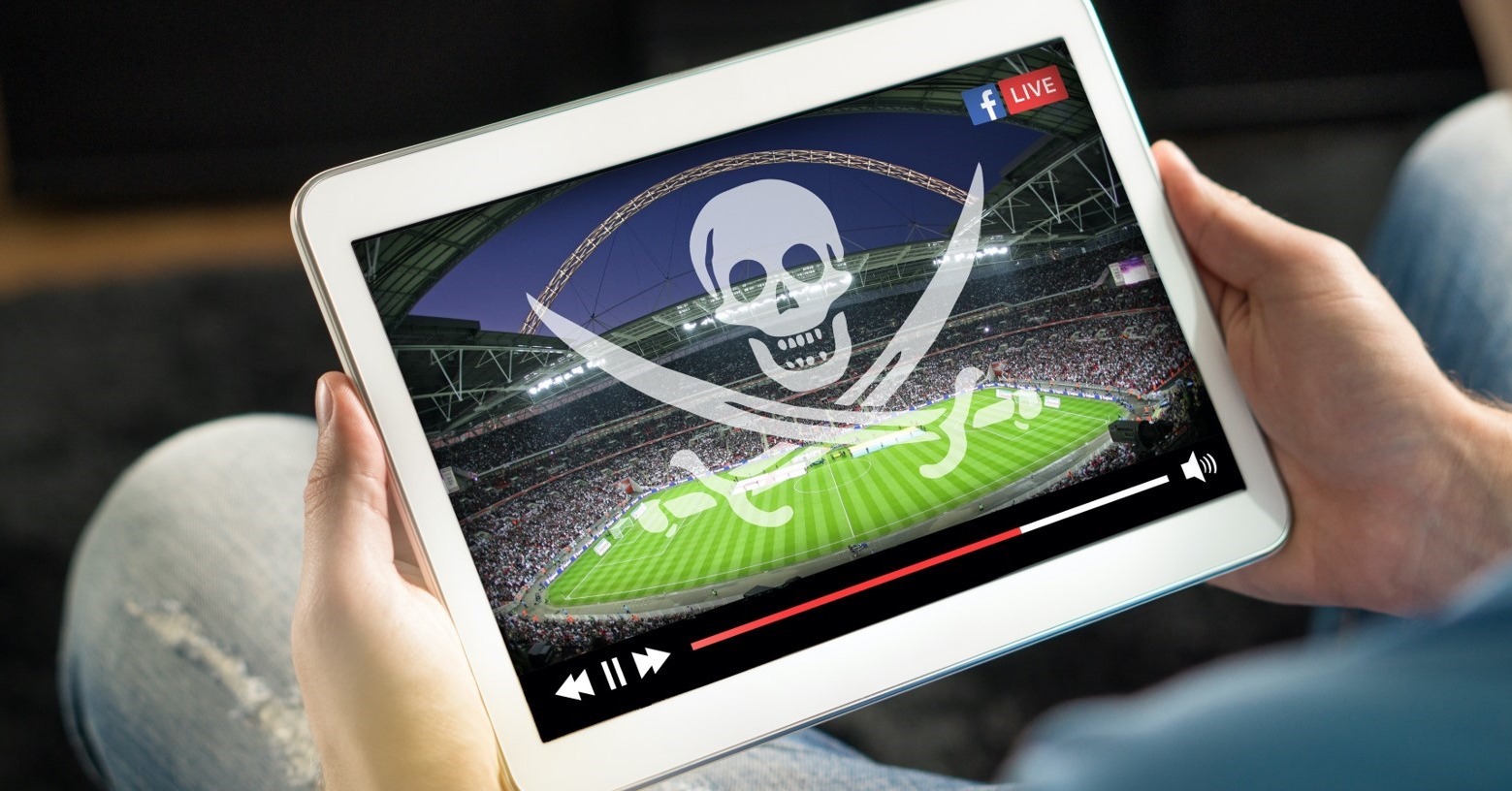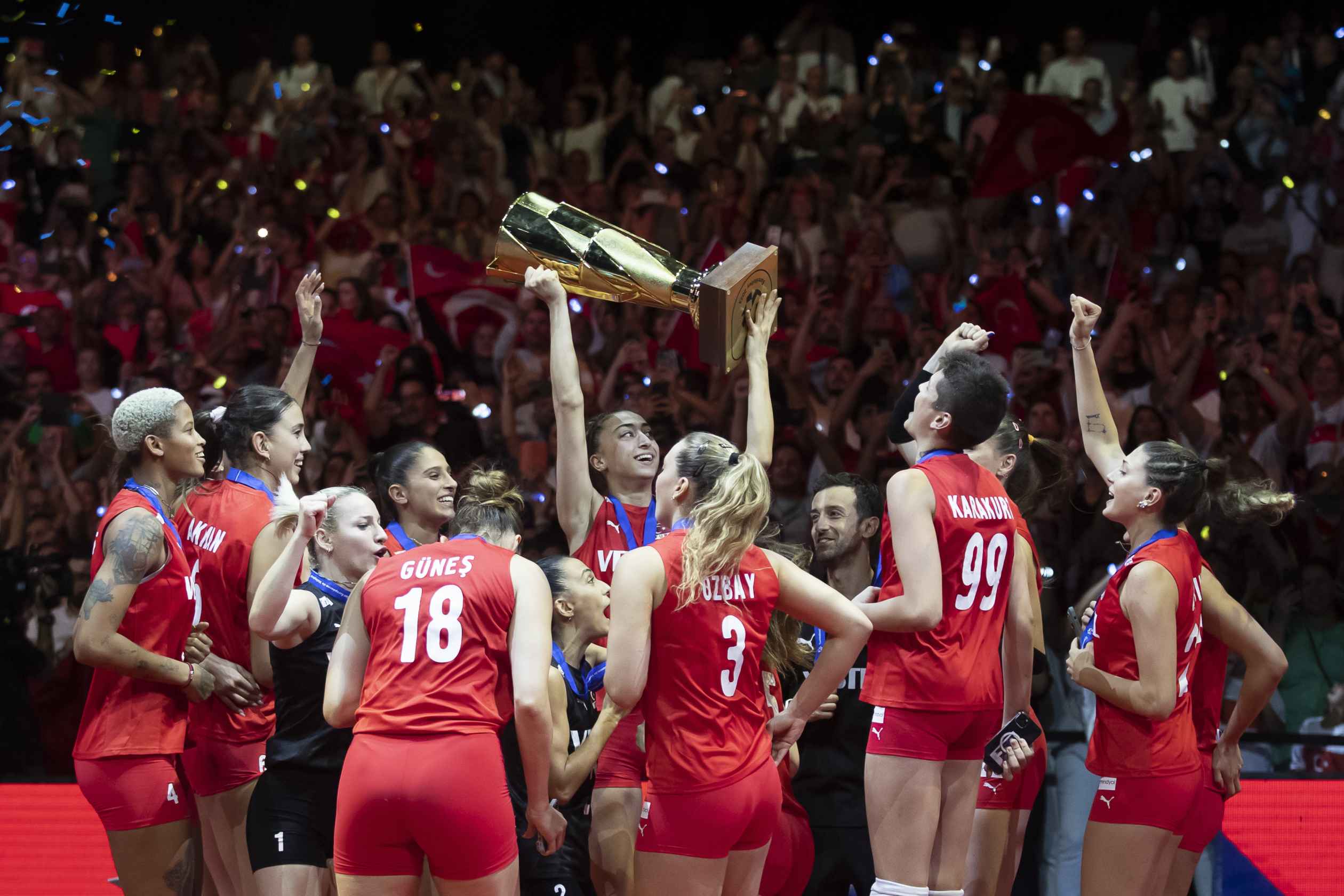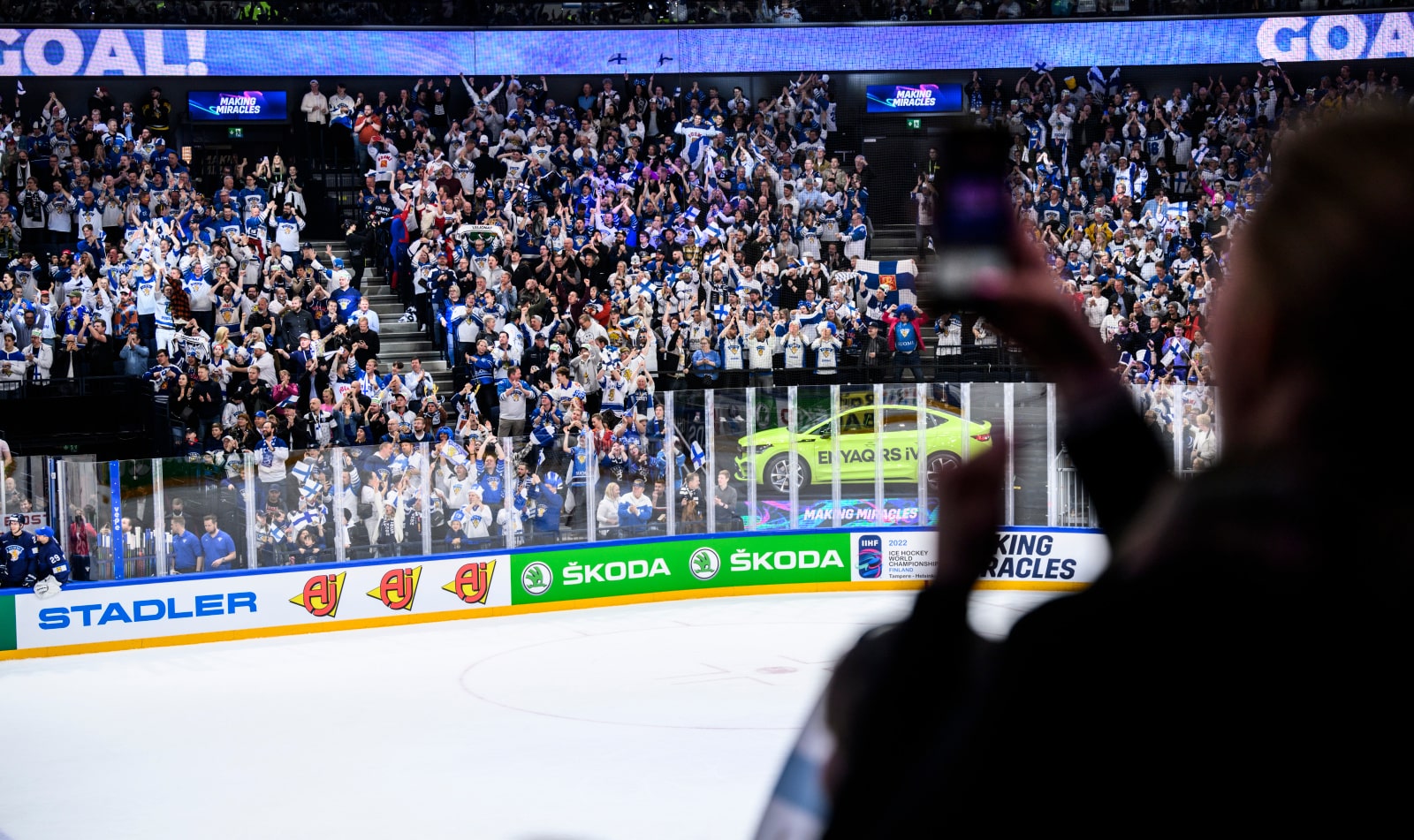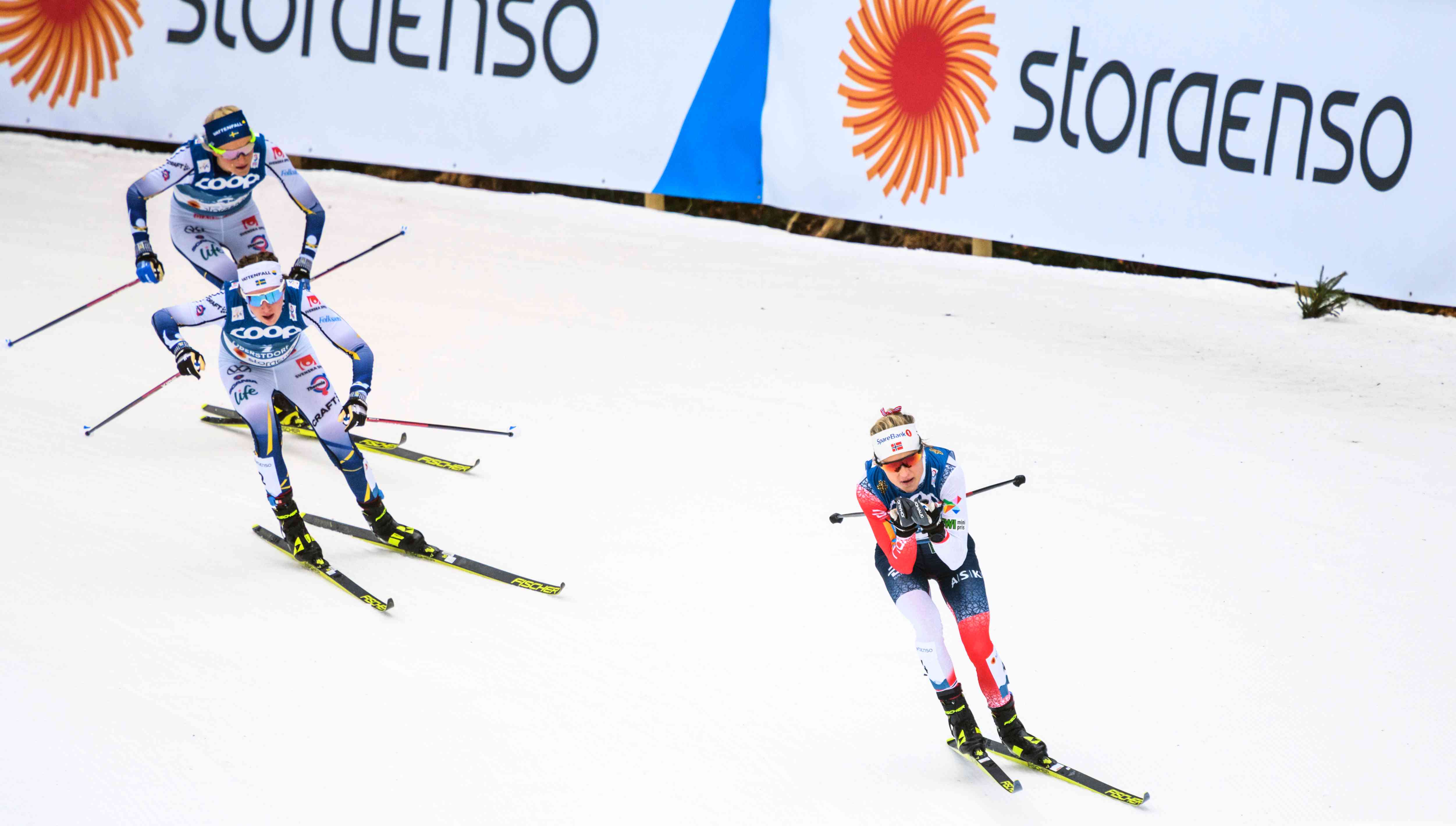The rise of women's sport: An unparalleled sponsorship opportunity

Five ways women’s sports sponsorship can provide ROI for your brand
Beyond the court: Vodafone's partnership with Turkish Volleyball Federation
Celebrating the best examples of sports sponsorship with VSA
The ultimate sports sponsorship guide
Nothing but net: Basketball as a sponsorship opportunity
The world of sports now fully understands the potentially immense commercial value of women's sport sponsorship. So that’s the end of the story, right? Nope. It hasn’t even started yet.
As the FIFA Women's World Cup in Australia and New Zealand has shown, the spotlight is shining brighter than ever on the incredible talent, inspiring stories and captivating rivalries within women's sport. This global event serves as another catalyst, propelling women's sports further into the mainstream and igniting the interest of fans worldwide.
Investment in women's sport is not a new concept, but it's on the brink of a monumental breakthrough. Brands that recognise this shift and proactively align themselves with the rising tide will reap the rewards of a dynamic and expanding market.
By embracing the commercial potential of women's sport, brands can access a realm of untapped opportunities.
The evolution: From overlooked market to rising commercial powerhouse
In 2010, Baronness Tanni Grey-Thompson, one of the most prominent figures in the world of women's sports, poignantly addressed the potential of the women's sport market. She noted in a report from The Commission on the Future of Women’s Sport that they started their exploration with a single, guiding question: "Is there a genuine opportunity to grow this market?" The findings illuminated a valuable audience keenly invested in women's sports, marking a transformative shift in perception that suggested it was high time for potential investors to consider women's sport in a new light.
It's fascinating to contrast this optimistic view with the actual investment landscape of that time. From 2005 to 2009, women’s sport in the UK only received 0.4% of sponsorship deal values, starkly juxtaposed with the 57.5% for men’s sport and 42% for mixed-gender sports. This disparity occurred despite a rising tide of enthusiasm for women's sports. As early as 2010, half of the survey respondents perceived the status of women’s sport to be on an upward trajectory. A significant 61% revealed they would be more inclined to follow women’s sports if broadcasted more frequently.
Leap forward to the present day, and the landscape of women's sports has drastically evolved. With viewing figures for women's sport in the UK soaring by 131% year-on-year, there's an undeniable surge in popularity. Interestingly, this exponential growth has happened despite women’s sport only securing a seventh of the media coverage compared to men’s sports. This discrepancy reflects an untapped potential that, when harnessed, could draw vast audiences and provide an answer to why companies should sponsor women’s sports.
The tides are turning: The current sponsorship landscape in women's sport
The realm of women's sport sponsorship has been bustling with activity. In 2021, a total of 381 sponsorship deals were reported, accumulating an estimated value of $USD 136.96m. These impressive figures are clear indicators of the growing commercial potential within the sector.
Various industries have recognised this burgeoning market, with the most active sectors in women's sports sponsorship including clothing and apparel, consumer goods and services, food, sports equipment and finance. These industries are demonstrating a keen interest and strategic foresight in partnering with women's sports.
Take, for instance, the partnership between UEFA and Visa, a deal worth an impressive $USD 28m. This collaboration signifies the increasing value and prominence of women's sport within multi-gender sports properties. It also showcases how these partnerships can provide brands with a substantial platform for exposure and engagement.
Similarly, the Women's Super League's (WSL) title sponsorship with British bank Barclays, which is reported to be worth around £10m annually, underscores the potential for standalone women's sports properties. This case exemplifies how these entities can attract lucrative brand partnerships independently, without the need for association with their male counterparts.
The increasing appeal of women's sports is not limited to a few high-profile events or leagues. Another compelling case comes from the realm of technology, with tech giant Google entering the fray. Google has recently become the first-ever global partner of women's basketball and the Women’s Basketball World Cup, following a sponsorship agreement with FIBA, the sport's governing body. This partnership, launched with the World Cup in Australia in September 2022, also makes Google the exclusive presenter of FIBA’s All-Star 5, an accolade bestowed upon the five top performers of the tournament. The deal underscores the widening spectrum of industries drawn to the commercial opportunities in women's sports, emphasizing that it's not just traditional sectors but also tech giants who are recognizing the value within this market.
There has been a surge in viewing figures and engagement across multiple women's sport competitions and properties, such as the WNBA and the Women’s T20 Cricket World Cup. This heightened engagement is paving the way for brands to access targeted audiences and unlock unique marketing opportunities.
However, it's not just the prominent brands sponsoring large-scale events that are reaping the benefits. A wealth of opportunities exists at events across Europe, providing brands of all sizes with potential avenues to connect with their target audiences. These myriad opportunities illustrate the diverse and accessible nature of women's sports sponsorship, emphasising that there is a perfect match out there for every brand.
Beyond commercial success: The societal impact of sponsoring women's sport
As women's sport continues to carve out its rightful place in the spotlight, the wider audience it serves reflects the potential for profound societal change. Key to this evolution is the creation of equity and inclusion in sports, which offers brands an opportunity to not only enjoy a significant return on investment but also to become part of the movement for gender equality.
The landscape of women's sport is rapidly changing, with increasing media coverage and a rise in sponsorship deals. YouGov’s “Women in Sport Report 2021” noted that 75% of Europeans believe there is still a lack of equality in media coverage and sponsorship between men's and women's sports however. Meanwhile, Leaders in Sport reported that 21% of UK adults spent more time following women’s sport in the preceding 18 months, attributing this to improved coverage and quality. These changes are bringing in new audiences, opening up a window of opportunity for brands to invest early in a market ready to boom, aligning with any ambitions of purpose marketing they may have.
Furthermore, the appeal of women's sport is expanding, attracting a growing viewership and offering massive potential for future growth. YouGov research suggests over half of Europeans believe the quality of women's sports has improved over the past five years, making it an attractive proposition for viewers and broadcasters alike. Record-breaking attendance at recent women's football games, like El Clasico all add to the mounting evidence of this trend.
It's not just the viewership that's growing. Audiences are demonstrating a clear preference for brands sponsoring women's sports. The Nielsen report found that 84% of general sports fans have an interest in women's sports, presenting brands with a unique chance to improve their brand perception and connect with new audiences. Moreover, women, who often hold household purchasing power, are more likely to favour brands sponsoring women's professional sports than men's. This preference was demonstrated by TikTok's partnership with the Women’s Six Nations, which was built on a shared commitment to equality and inclusion.
Brands investing in women's sports are already benefiting from the association. Over a third of people in Europe have noticed an improvement in sponsorship for women's sports in the past five years. Brands such as Mastercard and Visa have made exclusive sponsorships in the women's game, contributing to the ongoing rise and recognition of women's sport.
Crucially, women's sport sponsorship is currently delivering superior returns on investment. This is exemplified by the Women's EHF EURO 2022, which enjoyed coverage in over 80 countries and particularly strong viewership in Scandinavia. Women's sport offers an exceptional opportunity for brands to secure a partnership that delivers not only a strong return on investment but also advances their corporate social responsibility by promoting gender equity and inclusion.
The rewarding path: Why sponsoring women's sport is a win-win scenario
By sponsoring women's sport, brands can become part of a much-needed change, helping to create a more equitable and inclusive sporting world. This strategy offers a tangible way for brands to demonstrate their commitment to these values, all while tapping into a rapidly growing and engaged audience.








